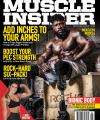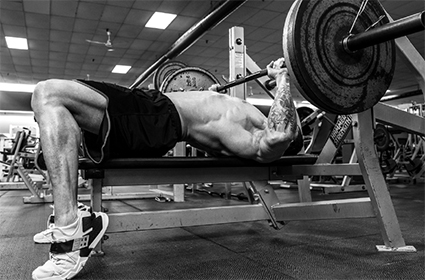How Cheating Can Build You More Muscle

Loosening your form can fast-track muscular gains, so long as you don’t get sloppy. The trick is to know how and when.
If nice guys finish last—and personal experience has done nothing to convince me otherwise—why not cheat? But let’s be clear: I’m not talking about cheating on your taxes, your partner, or your physics exam, but rather, in your training. With regard to working out, cheating is a high-intensity technique that allows you to take a given set past the point of muscle failure, which can boost muscle growth—so long as it’s not overdone.
The irony, of course, is that you typically hear us advise you to use “textbook” or “good” form as you execute a movement. Cheating, by design, recommends less-than-perfect form. Cheating implies you can make gains at the expense of proper exercise execution, which seems counterintuitive to the good-form-at-all-costs message. But although we still suggest you complete each and every repetition with proper form, it would be a mistake to think there’s not a time and place to loosen up your technique. What’s crucial is to know not only when it’s best to do less-than-perfect reps but also how and with which exercises you should never break your form.
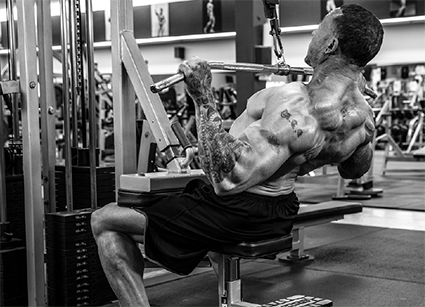
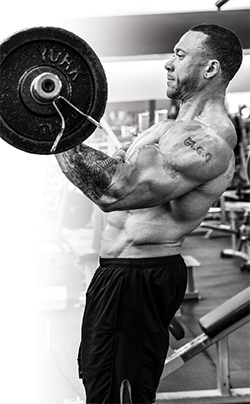 THE CHEATING TRADE-OFF
THE CHEATING TRADE-OFF
Cheating is essentially the use of momentum, generated via assistance from other muscle groups not commonly involved in the execution of the movement, to get a weight up so you can complete additional reps you may otherwise have not been able to do. More reps can lead to further muscle growth. However, if you’re using cheating correctly, it’s a premeditated and intentional act rather than simply allowing bad form to take over. Many trainers use sloppy form unintentionally because they don’t know how to do a movement correctly and therefore don’t know how to properly isolate the target body part.
Those who use bad form clearly increase their risk of training injury, be it to a muscle, tendon, or joint. Hence there’s a trade-off, a balancing act so that you minimize the risk of injury while gaining some of the muscle-building benefit of training past muscle failure.
Sports-medicine doctor Guillermo Escalante, a Los Angeles middleweight bodybuilding champion and owner of SportsPros Physical Therapy and Personal Training Center in Claremont, California, recommends against beginners using the cheating technique. “[This technique should be used] only by those people who are more experienced and know the difference between good and bad form and are implementing it as a technique to either push to failure or just beyond failure. Since beginners rarely know the difference between good and marginally good exercise form and are typically making gains in strength and size from more traditional means anyways, it’s not a smart idea for them to cheat.”
Escalante says cheating is a way to shock your body in a manner different from what it’s accustomed to, allowing you to complete more reps with a given weight or use a heavier weight than you might normally lift. Because of its greater risk of injury, he recommends using it infrequently rather than on a workout-to-workout basis.

ANATOMY OF A CHEAT REP
During a biceps curl, a simple thrust of the knees and hips is a common way to generate momentum. Here, it enables you to do additional reps past the point of failure similar to how forced reps with the help of a training partner allow you to work past failure. Instead of having somebody else help lift the weight, you do it yourself with the aid of additional muscle group(s) not directly involved in the lift itself. Using the standing barbell curl as an example, when you reach muscle failure with a given weight, you can continue the set by using your back or legs to overcome inertia and help swing the weight up. If you do this correctly, the biceps is still working as hard as it can. The other muscles involved merely put in just enough effort to make up the difference to complete the lift.
The key to cheating correctly, says Escalante, is to use it at the end of your set, not the beginning. “If you’re cheating on the first rep, you’re going way too heavy,” he says. “Only after you take a given muscle to failure by completing at least 6 to 8 reps on your own with good form should you begin to add momentum or a little body English, and then it should be just enough to keep the weight moving.”

Because cheat reps require you to begin your set with excellent form, you have to know the difference between what constitutes good and not-so-good form, which few beginners do.
Further complicating matters is where that extra oomph should be coming from. In the standing barbell curl example, a slight knee bend combined with a bit of hip thrust and lower back extension, simultaneously speeding up the concentric rep, or consciously recruiting the front delts can all be applied to some degree.
“Utilizing one or more of these ways to cheat in conjunction with the others will better distribute the forces as opposed to relying on a single means, which can put an extreme amount of stress on a single point,” adds Escalante. “Of course, every successive rep requires a little more assistance, so the amount of stress continues to go up. That’s why it’s important to do just a few such reps; as the degree of cheating increases the more reps you complete, so does the risk of injury.”
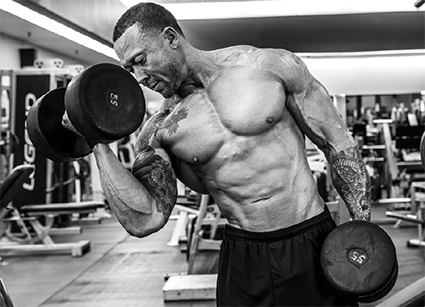
 GUIDELINES FOR CHEATING
GUIDELINES FOR CHEATING
Here’s a cheat sheet on what you should know with regards to the cheating principle:
1. Because of the higher risk of injury, make sure you’re well warmed up prior to using cheating motions, which includes several lightweight sets of the given exercise.
2. You must know what constitutes good form. Many trainees overestimate their knowledge and others lift by ego rather than safety, says Escalante.
3. Restrict cheating to perhaps your last set of an exercise to get a few extra reps—no more than four added reps, recommends Escalante.
4. Because you’re able to generate momentum through your legs, it’s far more common to see cheating motions with standing exercises than seated ones.
5. You’ll find it easier to cheat on multi-joint, free-weight moves rather than machines, which typically lock you into a predetermined biomechanical pathway.
6. Not all exercises are good candidates to use with the cheating principle. Moves that put your spine and rotator cuffs at risk are especially bad choices.
7. Cheat just enough to get the weight past the sticking point, then allow the target muscle group to take over again so it’s being maximally taxed.
8. Cheat early in your workout when your muscles are fresh. It’s easy to get sloppy when you’re tired, and that’s when an injury can strike.
9. Cheating should be premeditated. Think to yourself, “I can get about eight reps with this weight, and I plan on doing an additional two via cheating.” It should not simply be something you go to when the weight feels too heavy.
10. Don’t cheat on your heaviest sets. Bad form plus heavy weight can equal a training disaster. Save the cheating motions for moderate-weight sets when the muscle and joints aren’t under such extreme stress. That’s one reason strength athletes don’t train to failure.
11. Don’t cheat if you have a pre-existing injury, especially one that’s at the joint under tension. If you’ve got a herniated disc in your lumbar spine, avoid generating momentum through your lower back; conversely, if you have rotator-cuff issues, you may want to restrict cheating to lower-body day and single-joint arm movements.
12. As you age, cheat less frequently. Younger trainers may be able to get away with some cheating movements because their bodies are more resilient and forgiving. As you get older, joint tissues have poorer circulation and become less forgiving.
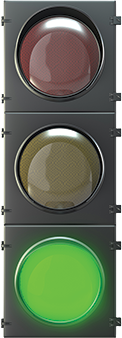 GREEN LIGHT EXERCISES
GREEN LIGHT EXERCISES
FOR CHEATING
1. Lying leg curl: raising your hips off the bench.
2. Calf raise (all varieties): slight bounce at the bottom of the rep.
3. Lateral raise: slight hip and knee extension (as with many standing movements).
4. Seated cable row: slight backward lean.
5. Pull-down: slight backward lean.
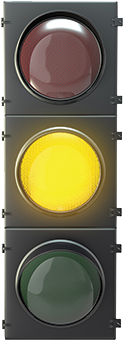 YELLOW LIGHT EXERCISES
YELLOW LIGHT EXERCISES
FOR CHEATING
Here’s a sample of common exercises with which you must use cheating techniques carefully to ensure safety.
1. Bench press: arching your back and lifting your hips off the bench, bouncing the bar off your chest.
2. Barbell curl: hip and knee thrust, lower back extension, bringing your elbows forward.
3. Bent-over row: rising up slightly as you raise the weight.
4. Shrug (all standing varieties): knee, hip, and elbow extension.
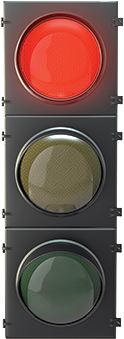 RED LIGHT EXERCISES
RED LIGHT EXERCISES
FOR CHEATING
Here’s a sample of common exercises that it’s typically not a good idea to cheat with, and most especially with heavy weights.
1. Squat (all varieties): bouncing out of the hole (especially on heavy sets).
2. Deadlift: here, it’s not a good idea to cheat at all.
3. Romanian deadlift: confusing this single-joint glute/upper hams exercise with the multi-joint deadlift, which puts far more pressure on the lower back.
4. Stiff-legged deadlift: confusing this with a Romanian; this lower-back exercise entails rounding of your back in the bottom position, which means you’re already highly vulnerable to injury.
5. Good morning: another lower-back exercise, so avoid cheating.
6. Hyperextension: a poorly named exercise because you never want to hyperextend a joint past its normal range of motion; don’t use momentum to push past full range of motion.
7. Behind-the-neck shoulder press: the rotator cuffs are in a highly vulnerable position when the barbell is just off your neck in the bottom position.
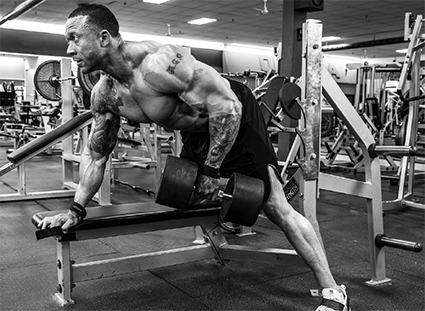
Photos: Dave Laus
Model: IFBB Pro Michael Grayer
Location: Olympia Muscle & Fitness, Mississauga
Click HERE to sign up for our free newsletter!

